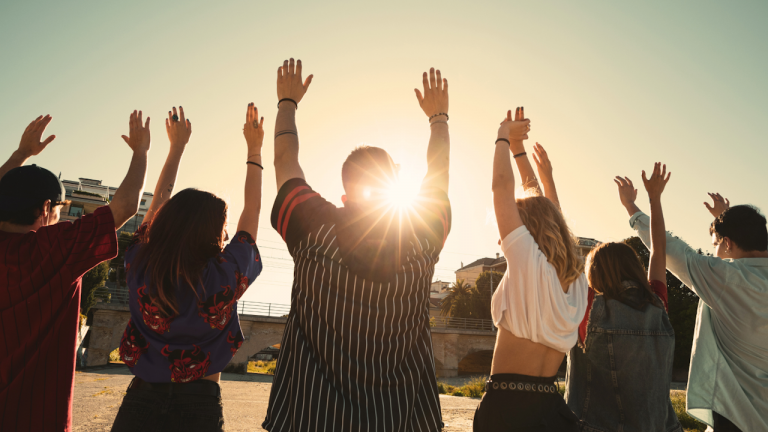#TravelTok has changed the face of Gen Z holidays, but with great power comes great responsibility from brands. Ex-SocialChain’s Emer McDevitt shares her thoughts as part of The Drum’s travel and tourism feature.
While social has impacted our lives in many ways, there is no denying the shift from Google to social as the preferred search engine for Gen Z. Unlike traditional search strategies, brands are actively leveraging the opportunity the platform offers for brands to directly interact with their target audience.
Travel brands, in particular, are uniquely positioned to harness the power of social: With a little know-how, they can differentiate themselves by bridging the gap between an over-heated travel industry that thrives on viral destinations and the culturally enriching, responsible experiences that Gen Z craves.
The rise of #TravelTok
According to TikTok, the platform has seen a staggering 410% increase in views of travel content since 2021. 76% of surveyed users said they are more likely to book a vacation because of a recommendation they saw on the platform. The hashtag “#explore” has been used more than 1.3 trillion times.
AI-powered
View FAQ
These statistics aren’t surprising: As a person who is decidedly millennial but on the edge of Gen Z, I spend hours watching travel videos so I can book a date as soon as it starts to rain, and I’ve taken my partner to a spot I saw on social media only to be disappointed when the line for the swing set at a cafe overlooking the bay was longer than the restaurant itself.
#TravelHacks are also on the rise, with some interesting results. Last week a video went viral of someone attempting the pillow hack (hiding their luggage inside a pillow to avoid paying baggage fees) only to end up being denied boarding on a flight. These hacks range from useful to ridiculous, but their popularity highlights the impact social media has had on travel behavior over the past five years.
Travel as a trend
But there’s something to be said about how social media has forged a clear collective identity as we all jump on the latest trends, like the clean girl aesthetic (and more recently Oatly’s Mob Wives).
The same trend is seen in travel, with the same destinations appearing again and again, and photos and videos shot from the exact same locations at the same beach clubs and restaurants.
But these viral destinations also have a downside, and it’s bigger than we might think: Just recently, protesters in Mallorca banned tourists from the popular Instagram spot of Calo des Moro in protest against mass tourism on the island.
While social media is not the only source of issues like mass tourism, the very nature of platforms like TikTok and Instagram is that they continually promote deliberately aspirational content to drive reach and engagement without digging too deep below the surface of reality.
Responsible Tourism
But unlike their Baby Boomer and Millennial predecessors, Gen Z is rejecting dream travel in favor of more authentic, culturally enriching experiences. This group doesn’t want to jump on the latest travel trend or go to the little restaurant that suddenly becomes the most popular restaurant in the area. They want unique, personalized experiences that don’t impact their local community.
They’re opting for lesser-known destinations that steer clear of trendy travel trends and engage with local communities. Plus, they’re a generation that demands sustainable travel: 56% of Gen Z travelers believe choosing eco-friendly travel options is important to providing a positive experience for locals and tourists.
By curating unique experiences that focus on responsible tourism, travel brands can differentiate themselves from competitors and appeal to Gen Z. On social media, you can think about your authenticity and how to make sure it comes across.
How Gen Z travel preferences impact brands
If travel brands want to speak with actions and not just words, it’s worth collaborating with local creators who know or live in the region for their travel content. They could advise their audience on niche food, drink and excursion spots rather than trending places to ease pressure on local communities. Or they could partner with creators in the responsible tourism/sustainability sector to draw attention to local issues in the area. Or they could use their platform to be a voice for local businesses and make them heroes on social media.
Instead of focusing on hacks to avoid baggage fees, let’s reverse the “travel hack” culture with tips on how tourists can travel sustainably and support local businesses. Or create custom itineraries focused on lesser-known destinations. If you love Ibiza, you should definitely visit it. [insert lesser-known destination].
While travel isn’t its focus, travel brands could learn a lot from Patagonia. The company cleverly uses its platform to highlight communities around the world, supporting heroic activists like Angela Astudillo, who trekked through the desert in northern Chile to collect illegally buried clothing and turn it into wearable art. And best of all, these videos are completely free of brand logos.
Recommended Newsletters
Daily Briefing Everyday
Check out the most important news of the day, hand-picked by our editorial team.
This Week’s Ad Wednesday
See the best ads from the last week all in one place.
Drum Insider Once a Month
Learn how to pitch your piece to an editor and get published on The Drum.
When it comes to travel, Gen Z does things differently than previous generations. While creating content about the “Instagrammable swings” in front of the bay might have been enough to pique my interest, travel brands need to highlight how they are improving to become a brand Gen Z wants to invest in.
Our conversation with Emer continues here. Further reading:


